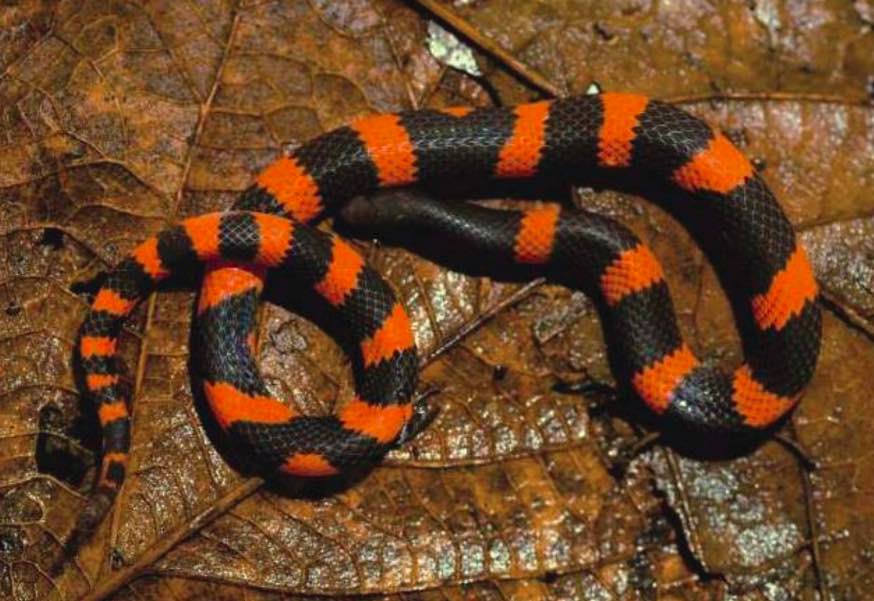- Researchers have named the new species Geophis lorancai in honor of biologist Miguel Ángel de la Torre Loranca, who collected most of the specimens of the new species from the the mountains of the Sierra Zongolica in west-central Veracruz in Mexico.
- This snake, with a vivid orange and black banding pattern on its body, belongs to the genus Geophis, a group that is commonly referred to as earth snakes.
- With the description of G. lorancai, the number of species in this genus increases to 50, the researchers write, making this the most species-rich genus of snake in the Western Hemisphere.
Scientists have described a strikingly colored new species of snake from the mountains of east-central Mexico.
This snake, with a vivid orange and black banding pattern on its body, belongs to the genus Geophis, a group that is commonly referred to as earth snakes.
Researchers have named the new species Geophis lorancai in honor of biologist Miguel Ángel de la Torre Loranca, who collected most of the specimens of the new species from the the mountains of the Sierra Zongolica in west-central Veracruz in Mexico.
With the description of G. lorancai, the number of species in this genus increases to 50, the researchers write in a new study published in ZooKeys, making this the most species-rich genus of snake in the Western Hemisphere.
G. lorancai is the fourth new species described by biologist Adrian Nieto-Montes de Oca of National Autonomous University of Mexico and his collaborators from the Mexican highlands. Over the last 14 years, the team has discovered other species of earth snakes in Oaxaca, Guerrero, and Puebla in Mexico.

Snakes of the Geophis group are usually elusive and poorly understood. Moreover, these burrowing reptiles have restricted distribution, making them vulnerable to extinction, scientists say.
“Most of these snakes have notably small geographic ranges and sometimes are only found in one type of vegetation,” the scientists note in a statement. “This makes them particularly vulnerable to the destruction of their habitat. It is important to know them before it gets too late.”
The authors add that the mountains of east-central Puebla and west-central Veracruz, where the new species was discovered, is yet to be thoroughly explored and could yield many more previously undescribed species of earth snakes.
“Our analyses suggest that this group is more diverse than previously thought,” the authors write. “They have proven to be an exciting model to understand the patterns of biological richness in the Mexican mountains.”
CITATION:
- Canseco-Márquez L, Pavón-Vázquez CJ, López-Luna MA, Nieto-Montes de Oca A (2016) A new species of earth snake (Dipsadidae,Geophis) from Mexico. ZooKeys 610: 131-145. doi: 3897/zookeys.610.8605